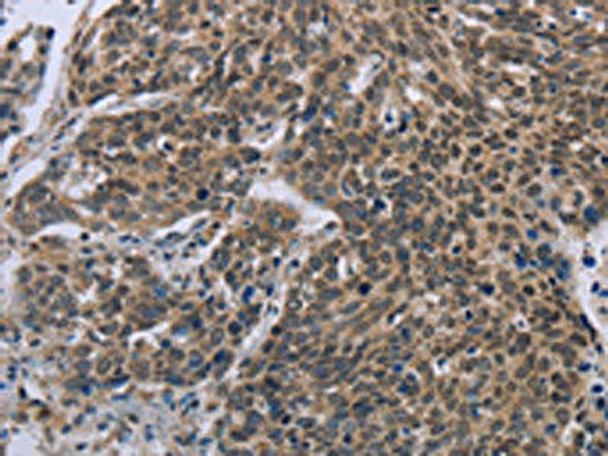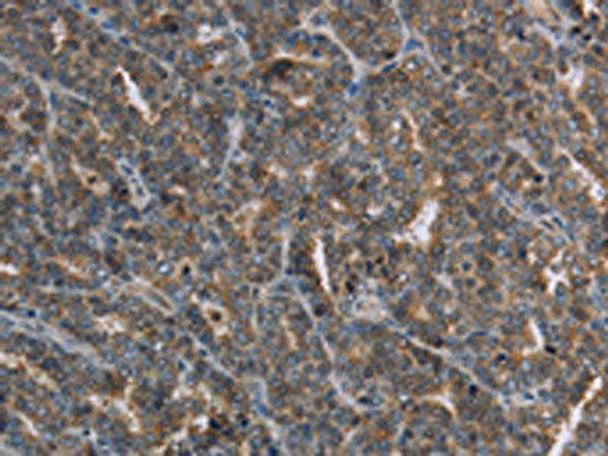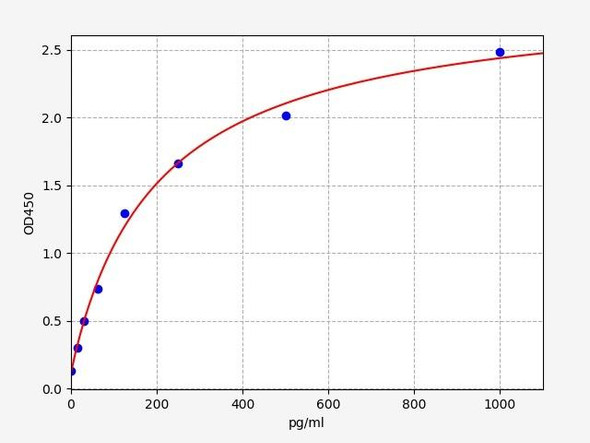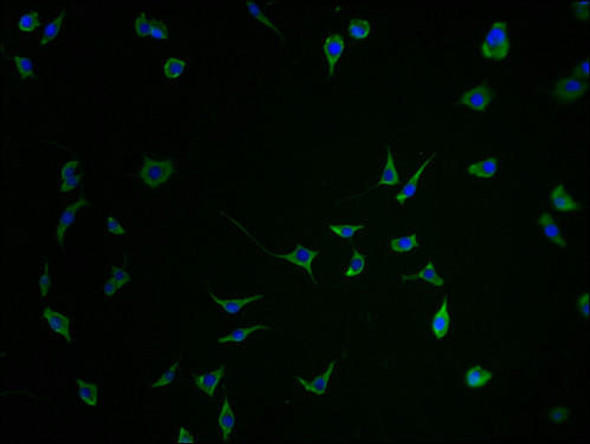Description
FGF20 Antibody (PACO19660)
The FGF20 Polyclonal Antibody (PAC019660) is a vital tool for researchers investigating the role of FGF20, a member of the fibroblast growth factor family, in various biological processes. Raised in rabbits, this antibody exhibits high reactivity with human samples and has been validated for use in Western blotting applications.FGF20 is known to play a key role in development, tissue repair, and cell growth, making it a crucial target for studies in developmental biology, regenerative medicine, and cancer research. By binding specifically to the FGF20 protein, this antibody enables precise detection and analysis in a variety of cell types, facilitating in-depth research into the mechanisms underlying its effects.
The intricate functions of FGF20 make it a promising candidate for therapeutic interventions in conditions such as developmental disorders, neurodegenerative diseases, and various cancers. Understanding the signaling pathways and interactions involving FGF20 is essential for the development of targeted therapies aimed at modulating its activity for therapeutic benefits.
| Antibody Name: | FGF20 Antibody (PACO19660) |
| Antibody SKU: | PACO19660 |
| Size: | 50ul |
| Host Species: | Rabbit |
| Tested Applications: | ELISA, IHC |
| Recommended Dilutions: | ELISA:1:1000-1:2000, IHC:1:25-1:100 |
| Species Reactivity: | Human, Mouse, Rat |
| Immunogen: | Synthetic peptide of human FGF20 |
| Form: | Liquid |
| Storage Buffer: | -20°C, pH7.4 PBS, 0.05% NaN3, 40% Glycerol |
| Purification Method: | Antigen affinity purification |
| Clonality: | Polyclonal |
| Isotype: | IgG |
| Conjugate: | Non-conjugated |
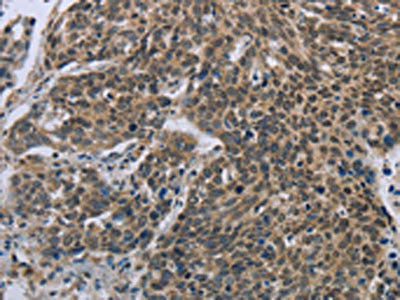 | The image on the left is immunohistochemistry of paraffin-embedded Human cervical cancer tissue using PACO19660(FGF20 Antibody) at dilution 1/20, on the right is treated with synthetic peptide. (Original magnification: x200). |
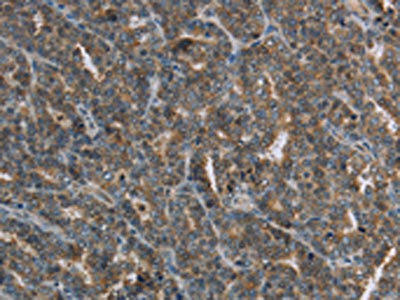 | The image on the left is immunohistochemistry of paraffin-embedded Human ovarian cancer tissue using PACO19660(FGF20 Antibody) at dilution 1/20, on the right is treated with synthetic peptide. (Original magnification: x200). |
| Background: | The protein encoded by this gene is a member of the fibroblast growth factor family. The fibroblast growth factors possess broad mitogenic and cell survival activities, and are involved in a variety of biological processes including embryonic development, cell growth, morphogenesis, tissue repair, tumor growth and invasion. This gene product is a secreted neurotrophic factor but lacks a typical signal peptide. It is expressed in normal brain, particularly the cerebellum, and may regulate central nervous system development and function. Homodimerization of this protein was shown to regulate its receptor binding activity and concentration gradient in the extracellular matrix. Genetic variations of this gene have been associated with Parkinson disease susceptibility. |
| Synonyms: | fibroblast growth factor 20 |
| UniProt Protein Function: | FGF20: Neurotrophic factor that regulates central nervous development and function. Belongs to the heparin-binding growth factors family. |
| UniProt Protein Details: | Protein type:Cytokine Chromosomal Location of Human Ortholog: 8p22 Cellular Component: extracellular region Molecular Function:1-phosphatidylinositol-3-kinase activity; phosphatidylinositol-4,5-bisphosphate 3-kinase activity; protein-tyrosine kinase activity; Ras guanyl-nucleotide exchange factor activity Biological Process: cell-cell signaling; fibroblast growth factor receptor signaling pathway; MAPKKK cascade; phosphoinositide-mediated signaling; regulation of phosphoinositide 3-kinase cascade; signal transduction Disease: Renal Hypodysplasia/aplasia 2 |
| NCBI Summary: | The protein encoded by this gene is a member of the fibroblast growth factor family. The fibroblast growth factors possess broad mitogenic and cell survival activities, and are involved in a variety of biological processes including embryonic development, cell growth, morphogenesis, tissue repair, tumor growth and invasion. This gene product is a secreted neurotrophic factor but lacks a typical signal peptide. It is expressed in normal brain, particularly the cerebellum, and may regulate central nervous system development and function. Homodimerization of this protein was shown to regulate its receptor binding activity and concentration gradient in the extracellular matrix. Genetic variations of this gene have been associated with Parkinson disease susceptibility. [provided by RefSeq, Oct 2009] |
| UniProt Code: | Q9NP95 |
| NCBI GenInfo Identifier: | 13626702 |
| NCBI Gene ID: | 26281 |
| NCBI Accession: | Q9NP95.1 |
| UniProt Secondary Accession: | Q9NP95,B2RPH5, |
| UniProt Related Accession: | Q9NP95 |
| Molecular Weight: | 23,499 Da |
| NCBI Full Name: | Fibroblast growth factor 20 |
| NCBI Synonym Full Names: | fibroblast growth factor 20 |
| NCBI Official Symbol: | FGF20 |
| NCBI Official Synonym Symbols: | RHDA2; FGF-20 |
| NCBI Protein Information: | fibroblast growth factor 20 |
| UniProt Protein Name: | Fibroblast growth factor 20 |
| Protein Family: | Fibroblast growth factor |
| UniProt Gene Name: | FGF20 |
| UniProt Entry Name: | FGF20_HUMAN |
| Antibodies | ELISA Kits |
| FGF20 Antibody (PACO01892) | Human FGF20 / Fibroblast growth factor 20 ELISA Kit |
| Human Fibroblast growth factor 20 (FGF20) ELISA Kit |
| Secondary Antibody |
| Anti-HRP Goat Anti-Rabbit IgG (H+L) Antibody (CABS014) |
| Recommended Products |
| Anti-FITC Goat Anti-Rabbit IgG (H+L) Antibody (CABS011) |
| Anti-HRP-conjugated Beta Actin Antibody (CABC028) |

